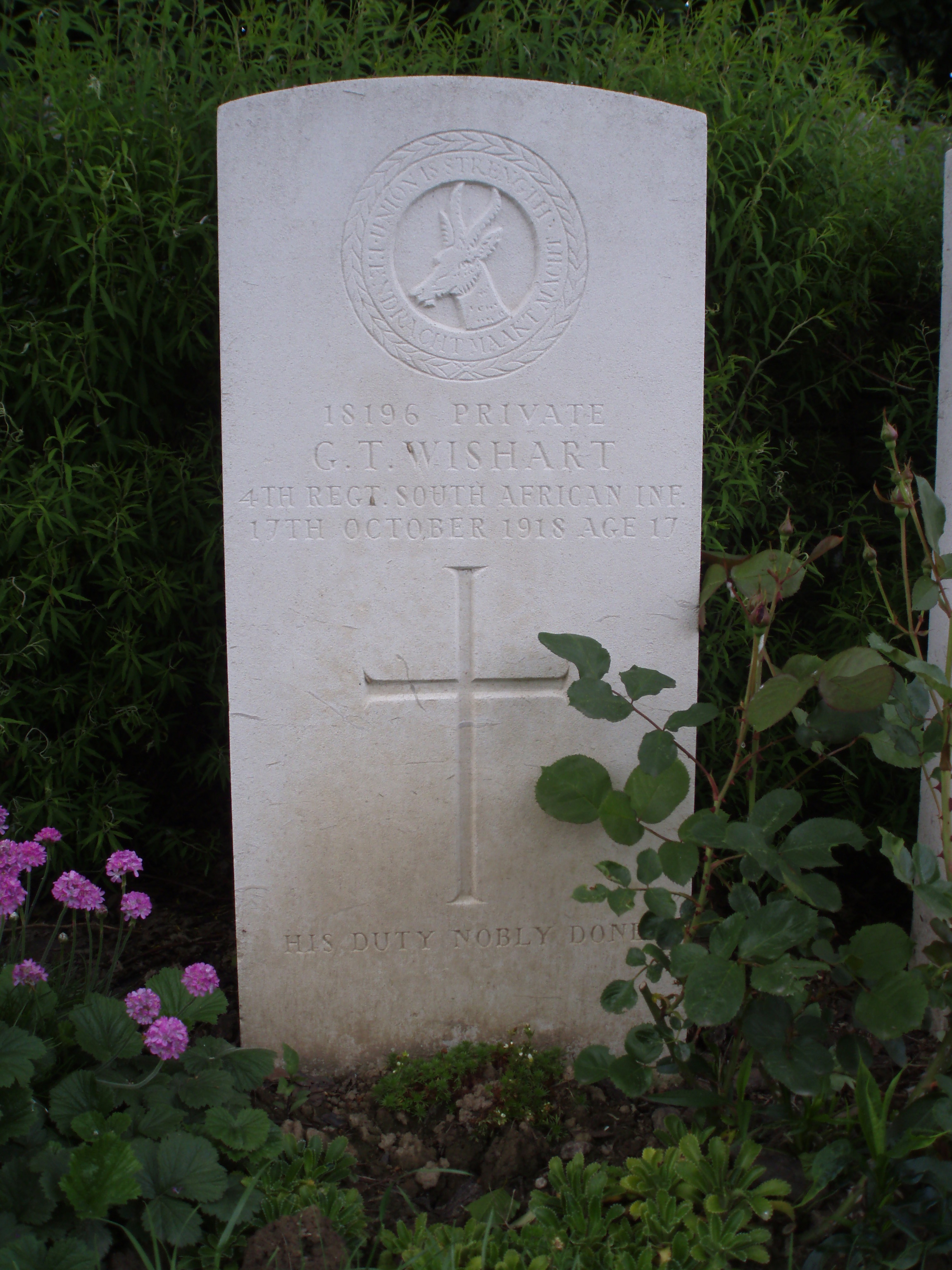Son of James Wishart and Isabella Buchan Walker. Born Port Elizabeth. An apprentice electrician in the township of Springs, Transvaal. Enlisted in Boksburg on 23 February 1918. Embarked in Cape Town on the transport ship Durham Castle for Europe on 2 May 1918 and arrived at Tilbury docks on 5 June. He was sent for training in Woking and taken on strength of 'H' Company, 2nd (Reserve) Battalion, South African Infantry. On 25 August, he sailed for France from Southampton. After four days at the Infantry Base Depot in Rouen, Gordon was sent to join to 'A' Company of the 4th Regiment, South African Infantry. Within two weeks of arriving at the front, Gordon was sent to the South African Field Ambulance, suffering from rubella. He spent the next month recovering at the New Zealand Stationary Hospital in Wisques. He was discharged back to duty on 7 October and returned to the regiment in time to take part in the recapture of Le Cateau. In the attack, which took place on 17 October, the South Africans were tasked with crossing the River Selle north of the town, seizing the railway and linking up with the 50th Division north of the railway triangle before establishing themselves on a spur east of Le Cateau. At 8 pm on 16 October, Gordon?s unit began to move towards the river, the crossing of which was said to be slow work because of the slender footbridges and narrow gaps in the wire. Upon reaching the east bank, the South Africans found themselves in places not fifty yards from the Germans holding the railway embankment. By 4:30 am the following day, the assembly for the attack was complete. A heavy mist rose from the valley, which shielded the South African?s position from the enemy and allowed them to advance at close range when zero-hour arrived at 8:05 am. With visibility at about fifty yards, the first wave of the attack quickly disappeared into the fog. The regiment stalled a hundred yards beyond the South African line when they came upon a sunken road protected by a palisade. Many men from the 4th were killed by machine-gun fire at this position, while those who eventually made it through encountered another more formidable obstacle near the railway. A belt of wire entanglements about sixty yards deep stood between them and their next objective; however, luck was on their side, and a way through was discovered in the form of a shallow trench used by the Germans to access an outpost. Slowly, they worked their way through the railway, where furious close combat fighting occurred. It is likely that Gordon had been killed at some point during the initial stages of the attack; however, if not, he would have almost certainly lost his life in the advance towards the next objective, which was hampered by enemy field guns that had accurately registered the regiment's position. |
